Frustration-Free Packaging vs. Standard Packaging: Key Differences
Article by : Lussopack
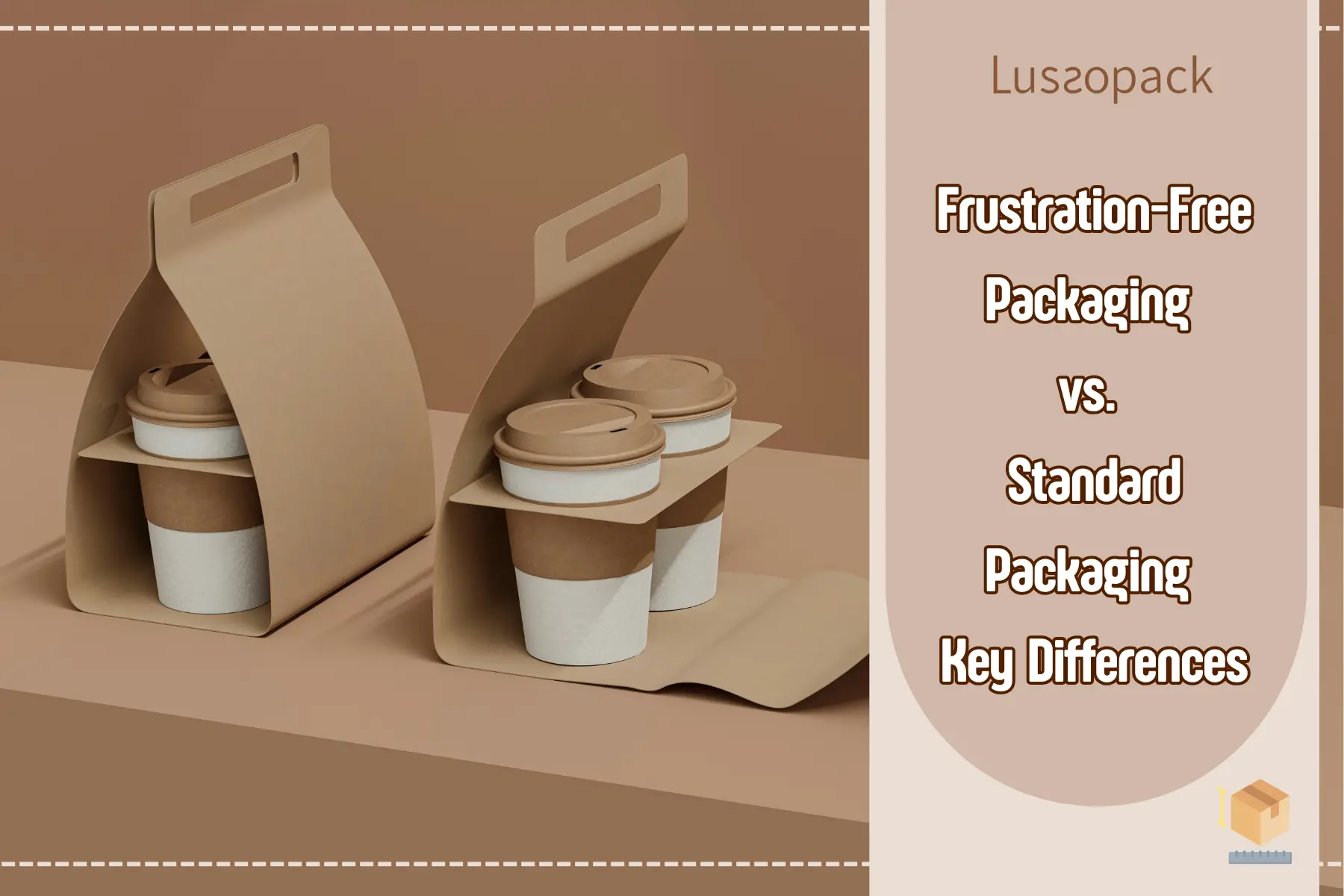
Packaging is important in e-commerce and retail, influencing everything from customer satisfaction and brand perception to environmental impact and logistics efficiency. It’s about shaping the customer experience from the moment the box arrives. With rising demand for eco-conscious practices and smoother unboxing moments, how you package your products matters more than ever.
Among the various packaging strategies today, Amazon’s Frustration-Free Packaging (FFP) has become a notable alternative to conventional methods. It’s designed not only to eliminate packaging waste but also to improve the end-user experience. Understanding the difference between standard packaging and frustration free packaging is essential for any business aiming to reduce returns, delight customers, and align with sustainability goals.
What is Frustration-Free Packaging?

Frustration-Free Packaging, often abbreviated as FFP, was first introduced by Amazon in 2008 to tackle a simple yet persistent problem: difficult packaging. We’ve all been there—wrestling with sharp plastic clamshells or cutting through excessive tape. FFP was Amazon’s answer to this issue.
Here’s what sets it apart:
- Ease of Opening: Frustration-free packaging is designed so that customers don’t need scissors, knives, or brute strength to get to the product. It opens with a few simple motions—making it accessible to everyone, including elderly customers or those with mobility issues.
- Recyclable Materials: The materials used are 100% recyclable, making this packaging method friendlier to the environment. There are no plastic wraps, no metal twist ties—just clean, streamlined packaging that can be tossed in a recycling bin.
- Minimal Packaging Waste: FFP intentionally avoids over-packaging. There are fewer layers, fewer inserts, and no excess filler. It’s lean, efficient, and designed to get the job done without clutter.
But the benefits don’t stop at convenience. Frustration-free packaging also helps reduce shipping volume, leading to lower transportation costs and carbon emissions. From both a customer and environmental perspective, it’s a win-win.
So when people ask, “What does frustration-free packaging mean?” or more specifically, “What does Amazon frustration free packaging mean?” —the answer is clear: it means a simpler, greener, and more thoughtful method to packaging that puts the end user first.
What is Standard Packaging?
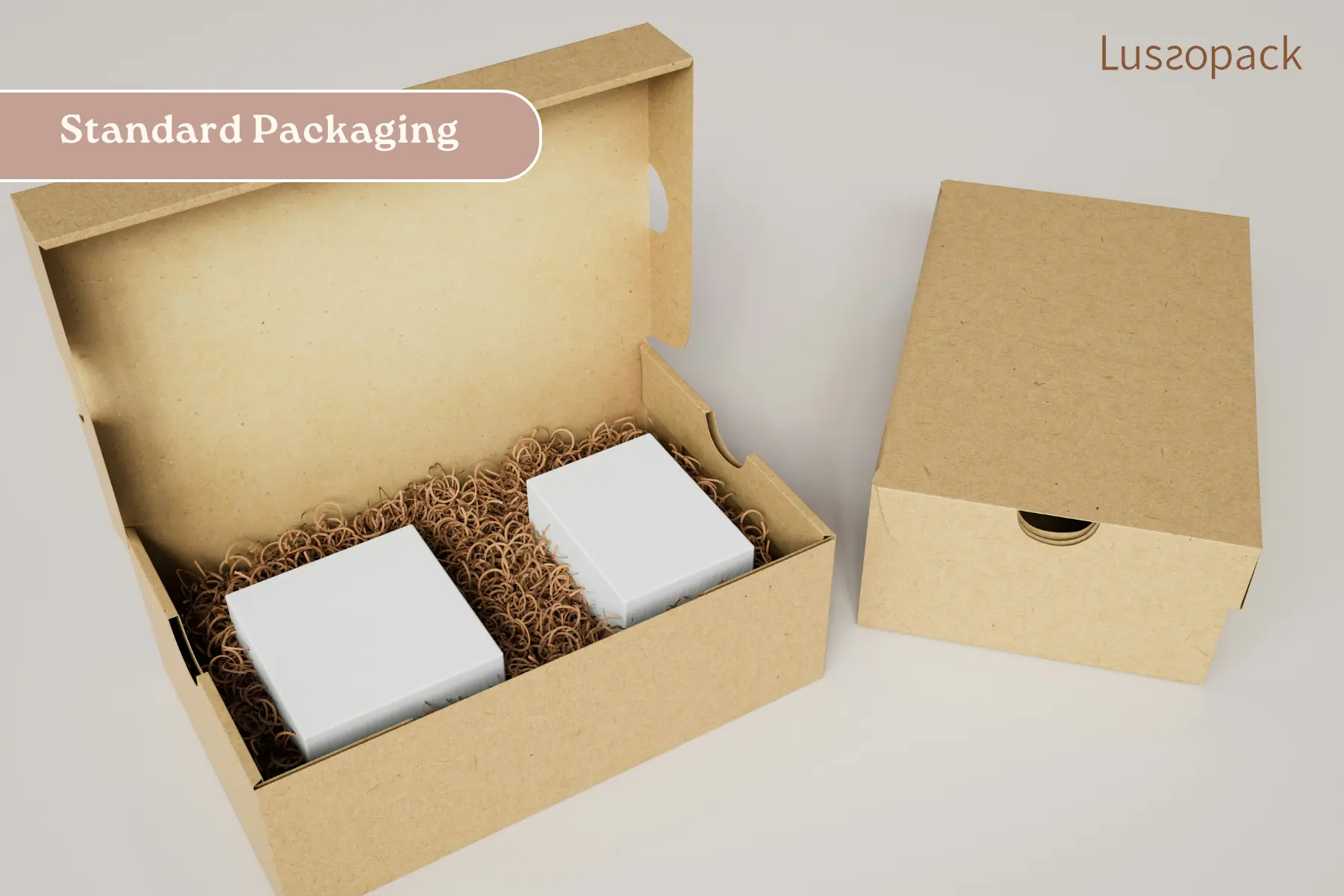
On the flip side, standard packaging refers to the traditional method we’ve been used to for decades. It’s the norm in many industries, especially in retail environments where visual appeal on the shelf still matters. But it’s not without its drawbacks.
Here are some common characteristics of standard packaging:
- Excessive Packaging Materials: Products are often wrapped in several layers of plastic, cardboard, foam, or even metal ties. While the intent is usually to protect the product or deter theft, it can feel excessive to consumers.
- Difficult-to-Open Designs: Ever fought with a blister pack or sliced your hand on a stubborn clamshell? That’s standard packaging. It frequently requires tools and effort, which can be frustrating and even unsafe.
- Non-Recyclable Components: Many standard packaging materials are made from mixed components—like plastic combined with foil or adhesives—that are hard to separate and therefore difficult to recycle.
While standard packaging does have its strengths—like offering strong protection and supporting retail displays—it often sacrifices user-friendliness and environmental responsibility. This tradeoff becomes more noticeable as consumer expectations evolve.
So if you’ve ever wondered, “What is standard packaging?” It’s the traditional, sometimes clunky method that prioritizes function and appearance over simplicity and sustainability.
Key Differences Between Frustration-Free and Standard Packaging
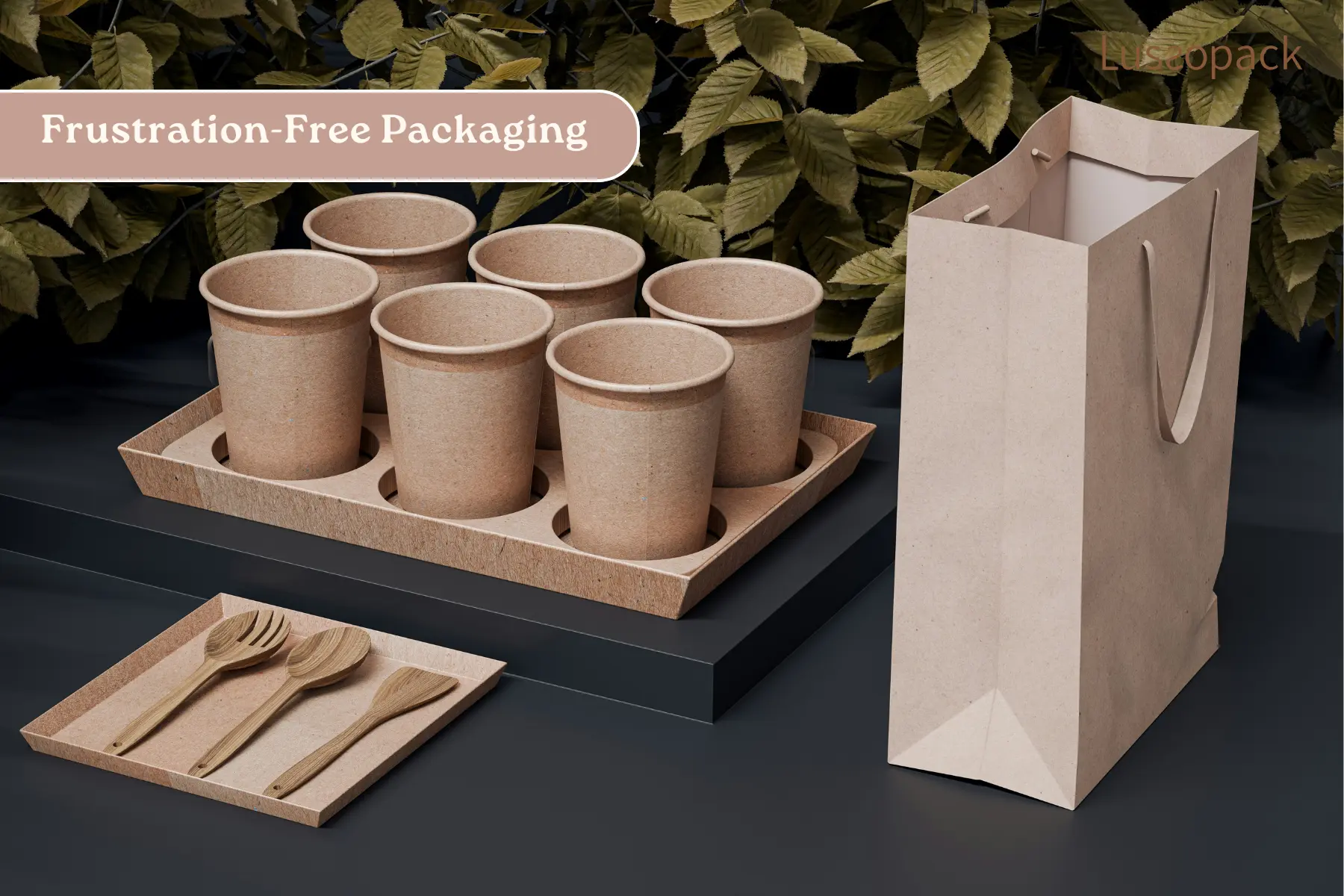
When comparing frustration free packaging vs. standard packaging, it’s important to understand that the choice directly impacts customer satisfaction, environmental responsibility, and shipping efficiency. While both types aim to protect and deliver products safely, they differ significantly in design philosophy, materials used, and overall user experience. Let’s break down the key differences between Amazon standard packaging vs. frustration free with this table.
| Aspect | Frustration-Free Packaging | Standard Packaging |
|---|---|---|
| Customer Experience | Designed for easy opening without tools, increasing satisfaction. | Often cumbersome to open, potentially leading to frustration. |
| Packaging Waste & Sustainability | Uses minimal, recyclable materials, reducing environmental impact. | Tends to involve excessive, non-recyclable materials, increasing waste. |
| Shipping Efficiency | Streamlined design can lead to reduced shipping costs due to optimized package sizes. | Bulkier packaging may result in higher shipping costs and less efficient logistics. |
| Cost Implications | May involve higher initial design costs but can lead to savings in shipping and materials over time. | Generally lower upfront costs but potential for increased expenses related to materials and shipping inefficiencies. |
| Product Protection | Provides adequate protection while minimizing materials; however, suitability varies by product type. | Often offers robust protection but at the expense of increased material use and potential over-packaging. |
| Brand Perception | Aligns with eco-friendly initiatives, appealing to environmentally conscious consumers. | May be perceived as wasteful, potentially impacting brand image negatively among sustainability-minded customers. |
As seen in the comparison, the difference between standard packaging and frustration free packaging lies in how the packaging aligns with your brand’s values and customer expectations. If your priority is sustainability, ease of use, and efficient logistics, frustration-free packaging may be the right fit. On the other hand, if your product demands maximum protection or premium shelf presence, standard packaging might still be the more practical choice. Understanding what is the difference between frustration free packaging and standard empowers brands to make informed decisions that enhance customer experience and operational efficiency in a rapidly evolving marketplace.
Pros and Cons of Frustration-Free Packaging and Standard Packaging
When comparing frustration free packaging vs. standard packaging, it’s important to weigh the strengths and limitations of both. Each serves a purpose depending on the product, target audience, and brand goals.
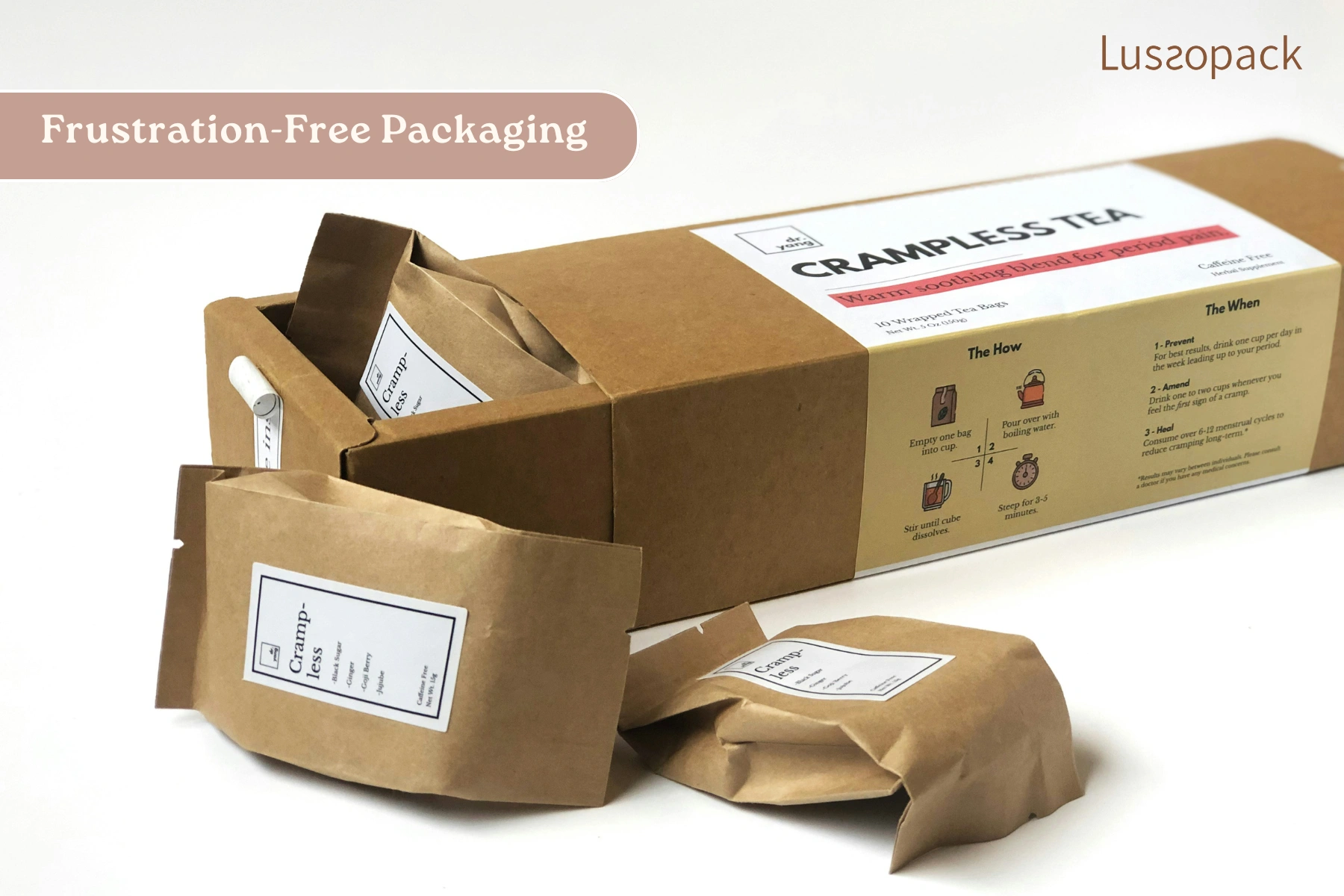
Pros of Frustration-Free Packaging
- Delivers a better unboxing experience: One of the top advantages of frustration-free packaging is the ease and satisfaction it brings to customers. No tools. No mess. Just a smooth, straightforward experience.
- Eco-friendly by design: Since it uses recyclable materials and avoids excess waste, FFP aligns with growing consumer demand for sustainable practices. This makes it an excellent choice for eco-conscious brands.
- Improves logistics efficiency: Frustration-free packaging is often more compact. Smaller boxes mean more products per shipment and lower transportation costs—an added benefit for online retailers.
- Reduces damage returns: Since FFP is designed to protect items without over-packaging, it can reduce the rate of damaged goods and returns.
Cons of Frustration-Free Packaging
- Upfront redesign costs: Transitioning from standard to FFP may require rethinking your entire packaging system. That often involves new tooling, testing, and design work.
- Higher initial investment: Especially for custom packaging, you may pay more upfront compared to bulk standard options.
- Not ideal for all products: Fragile or high-value items might need extra layers of protection, making standard packaging more appropriate in some cases.
Still, for many brands, the benefits of frustration free packaging—especially in terms of customer satisfaction and sustainability—can outweigh the costs over time.
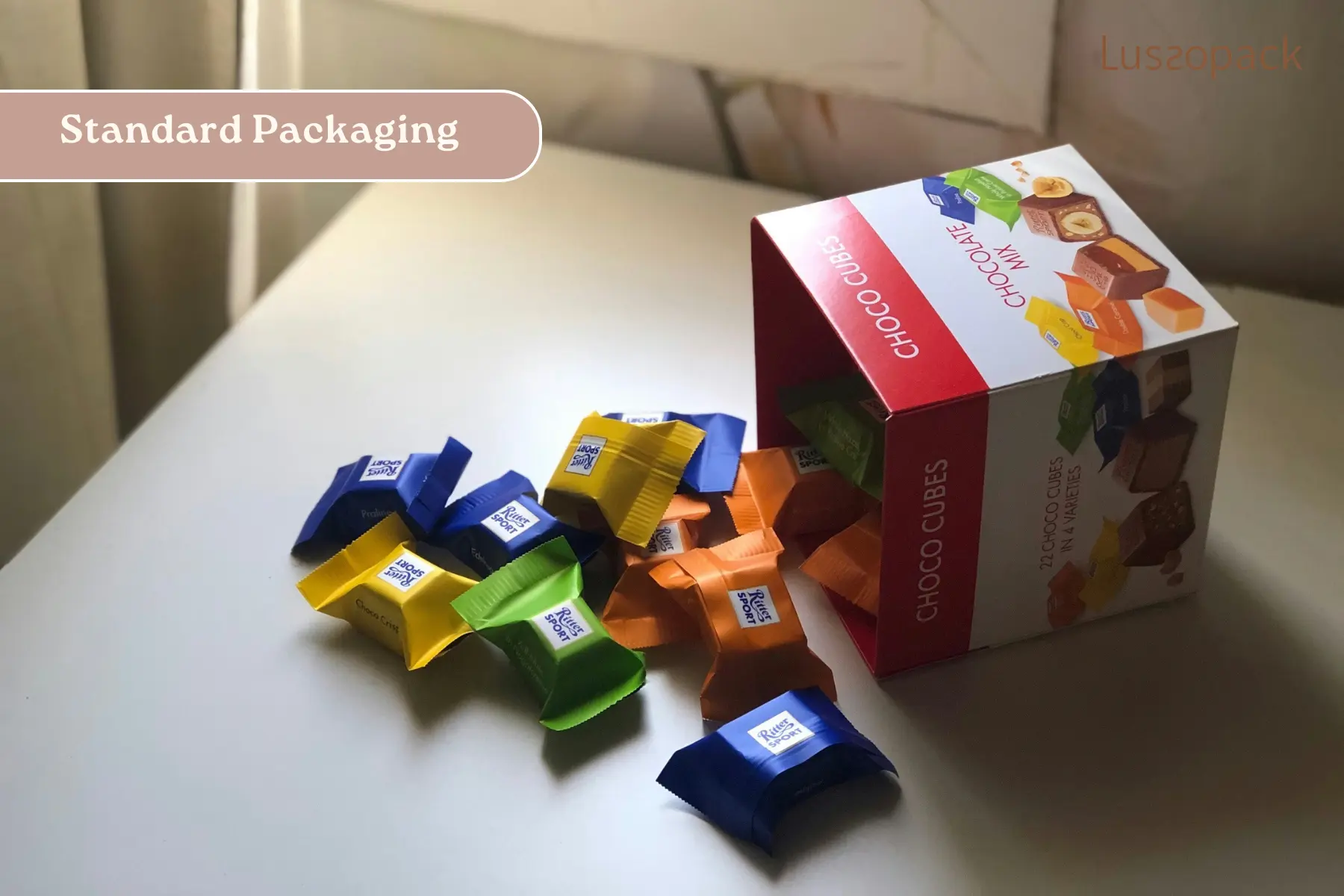
Pros of Standard Packaging
- Familiar and easy to produce: Many manufacturers are already set up to offer standard packaging, making it a convenient option for mass production.
- Economical in large volumes: Bulk orders of standard packaging materials are often cheaper, especially if aesthetics are not a major concern.
- Good for delicate items: With added layers of foam, padding, or plastic, standard packaging offers strong protection during transit.
Cons of Standard Packaging
- Can frustrate consumers: Difficult-to-open designs like clamshells and twist ties can hurt the user experience, especially for elderly or differently abled individuals.
- Greater environmental impact: Excessive and mixed-material packaging often ends up in landfills, hurting your brand’s sustainability image.
- Less efficient for shipping: Bulkier boxes and added filler materials mean higher shipping costs—especially over time.
When considering standard vs. frustration free packaging or trying to understand Amazon frustration free packaging vs. standard, the real question is: how does your packaging strategy reflect your brand values and customer expectations?.
Frustration-Free vs. Standard Packaging: When to Choose Each Type
Deciding between frustration free vs. standard packaging depends on your product type, customer expectations, and business goals. There’s no one-size-fits-all answer—each option serves a unique purpose in today’s retail and e-commerce landscape.
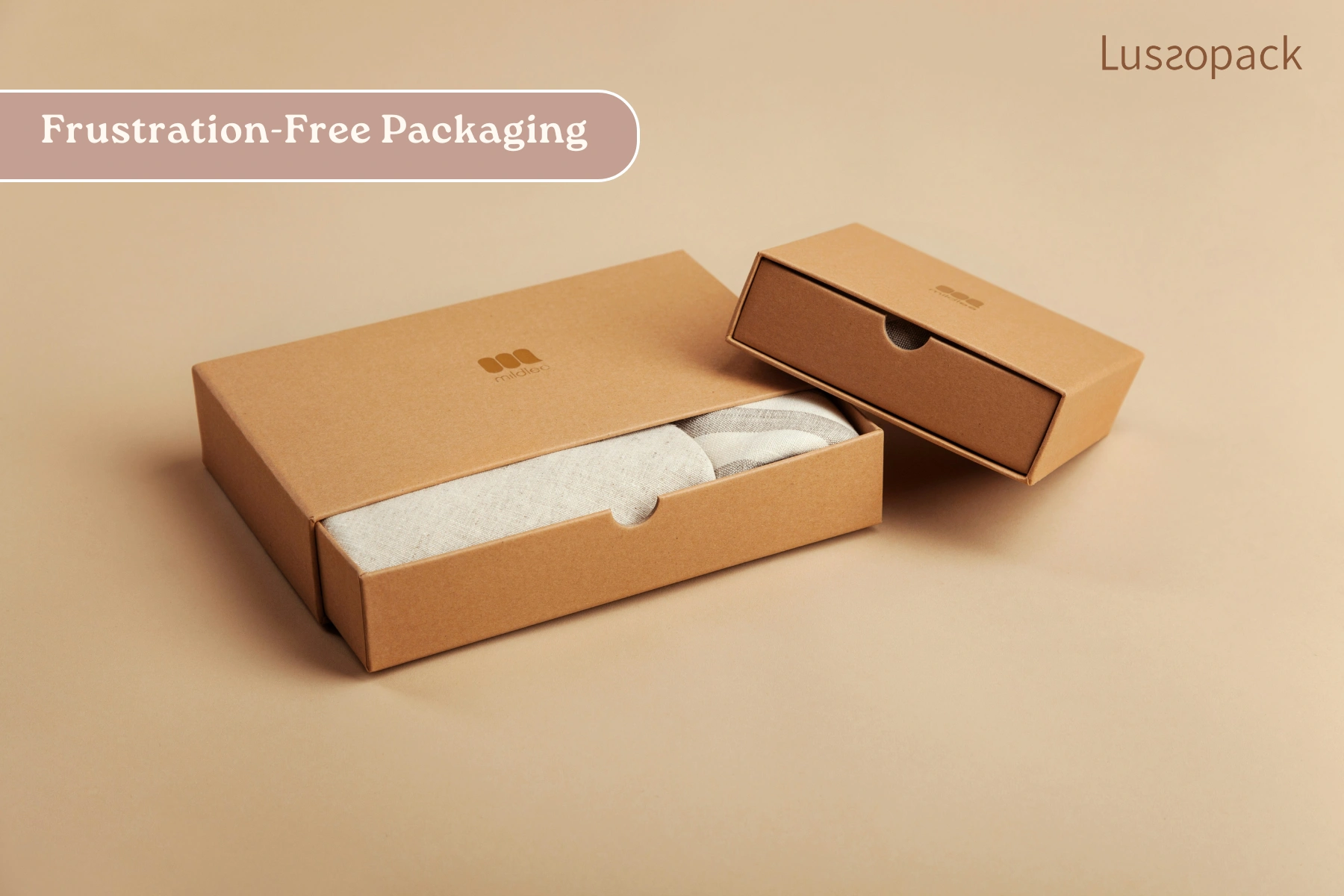
Frustration-Free Packaging Is Ideal For:
- Direct-to-consumer brands that rely on seamless unboxing experiences. If your product ships directly to customers, reducing opening hassle can elevate satisfaction and encourage repeat purchases.
- Eco-conscious businesses. If sustainability is a key part of your brand identity, frustration free packaging supports that message. Using recyclable, minimal packaging materials can also help you meet environmental goals and appeal to green-minded consumers.
- Streamlined logistics operations. FFP is generally designed with compactness in mind. This makes it a great choice for brands looking to reduce freight costs or optimize warehouse space.
- Products that are lightweight or durable. Items like books, electronics accessories, or apparel don’t need bulky protection, making FFP both practical and efficient.
Ultimately, when you prioritize user experience and planet-friendly practices, frustration free packaging offers a competitive edge.
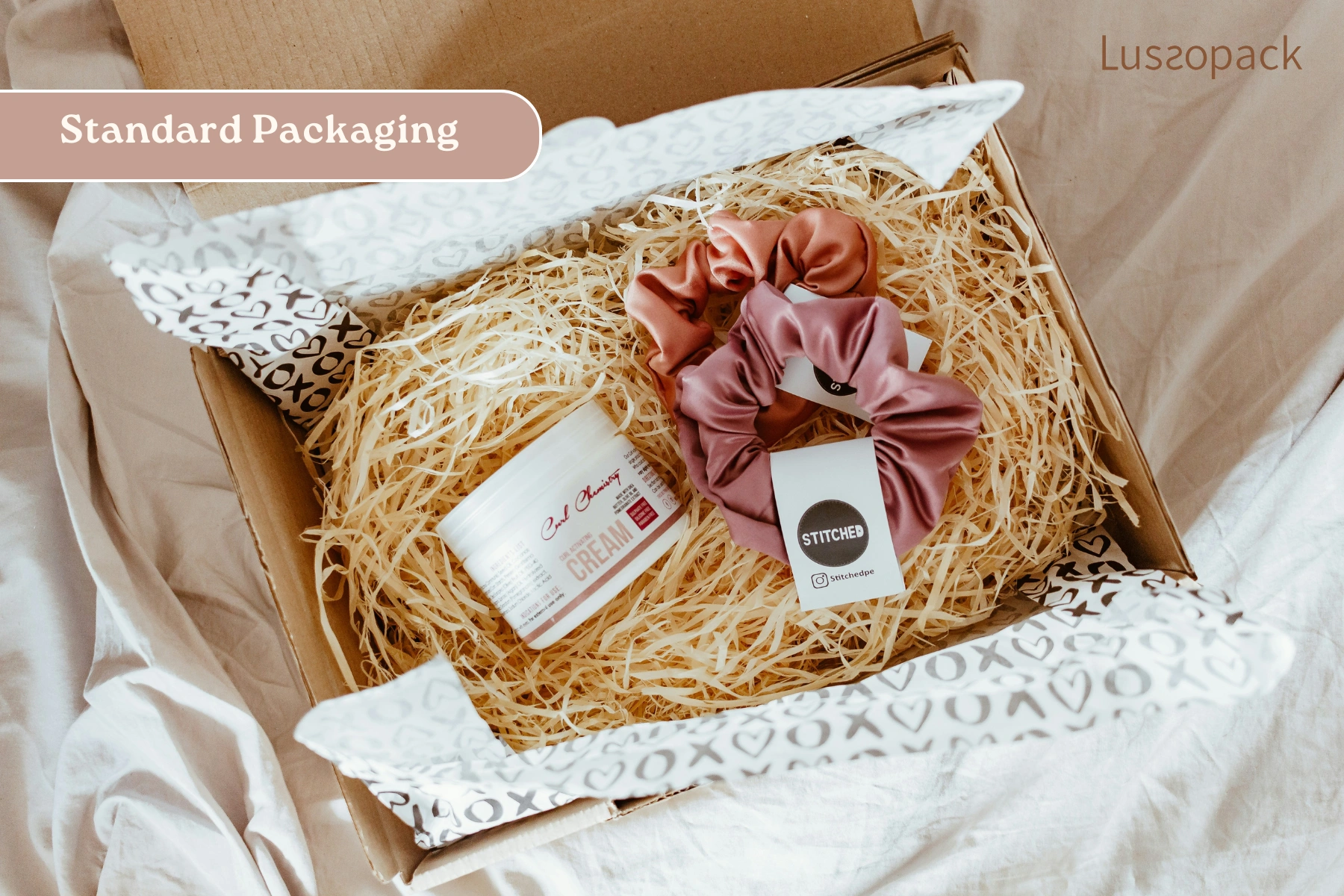
Standard Packaging May Be Appropriate For:
- Luxury or high-end retail products. When visual presentation on shelves matters—like in cosmetics, jewelry, or perfumes—standard packaging provides more room for elaborate structures and design elements.
- Fragile or high-value items. Glassware, electronics, and other breakables often need extra layers, foam inserts, or molded plastic to ensure safe delivery. In such cases, standard packaging still holds a protective advantage.
- Brand storytelling through physical packaging. For premium products where packaging is part of the brand experience, like in boutique gift boxes or limited edition collections, what is standard packaging offers the space and structure to get creative.
If your packaging needs to serve both as a marketing tool and a protective barrier, standard packaging—when done well—can still be the right fit.
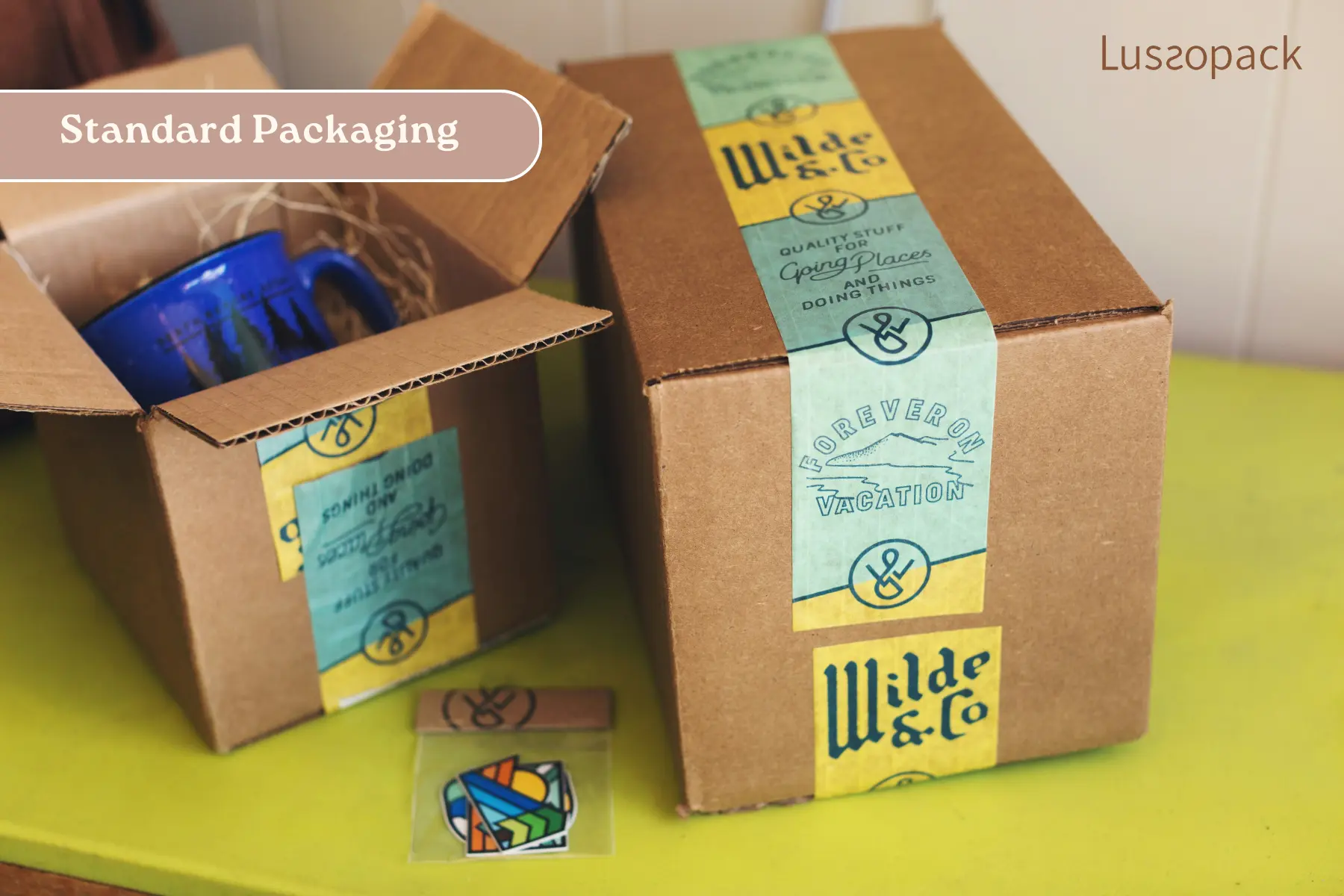
At LussoPack, we understand that packaging is an extension of your brand and a critical touchpoint in the customer journey. With over 30 years of experience in structural design, production, and innovation, Lussopack goes beyond off-the-shelf solutions. We work closely with clients across the globe to develop packaging that supports both brand storytelling and practical requirements—whether that means integrating eco-friendly materials, optimizing for logistics, or crafting a sophisticated unboxing moment.
As brands consider the difference between standard packaging and frustration free packaging, we offer the flexibility to incorporate the best of both worlds: the elegance and strength of traditional packaging with the simplicity and sustainability modern consumers demand. We’re also committed to helping our clients transition toward greener practices without sacrificing quality. Our team constantly explores new materials and engineering techniques that align with today’s environmental expectations—because we believe luxury should be responsible, too. Lussopack is here to deliver solutions that are as thoughtful as they are beautiful.
Interesting Blogs
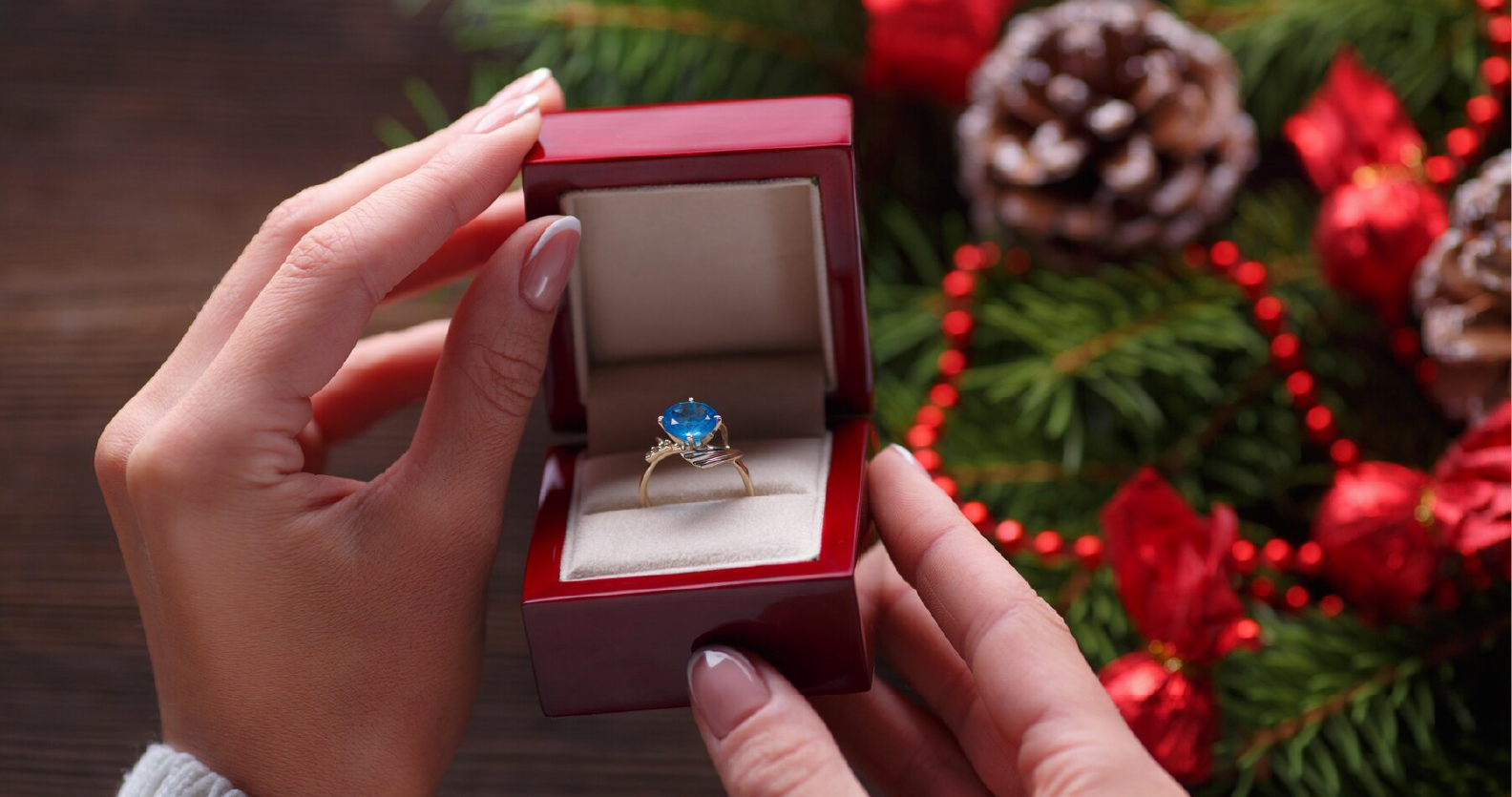
Packaging Innovations

Global Packaging Logistics

Packaging for Clothing
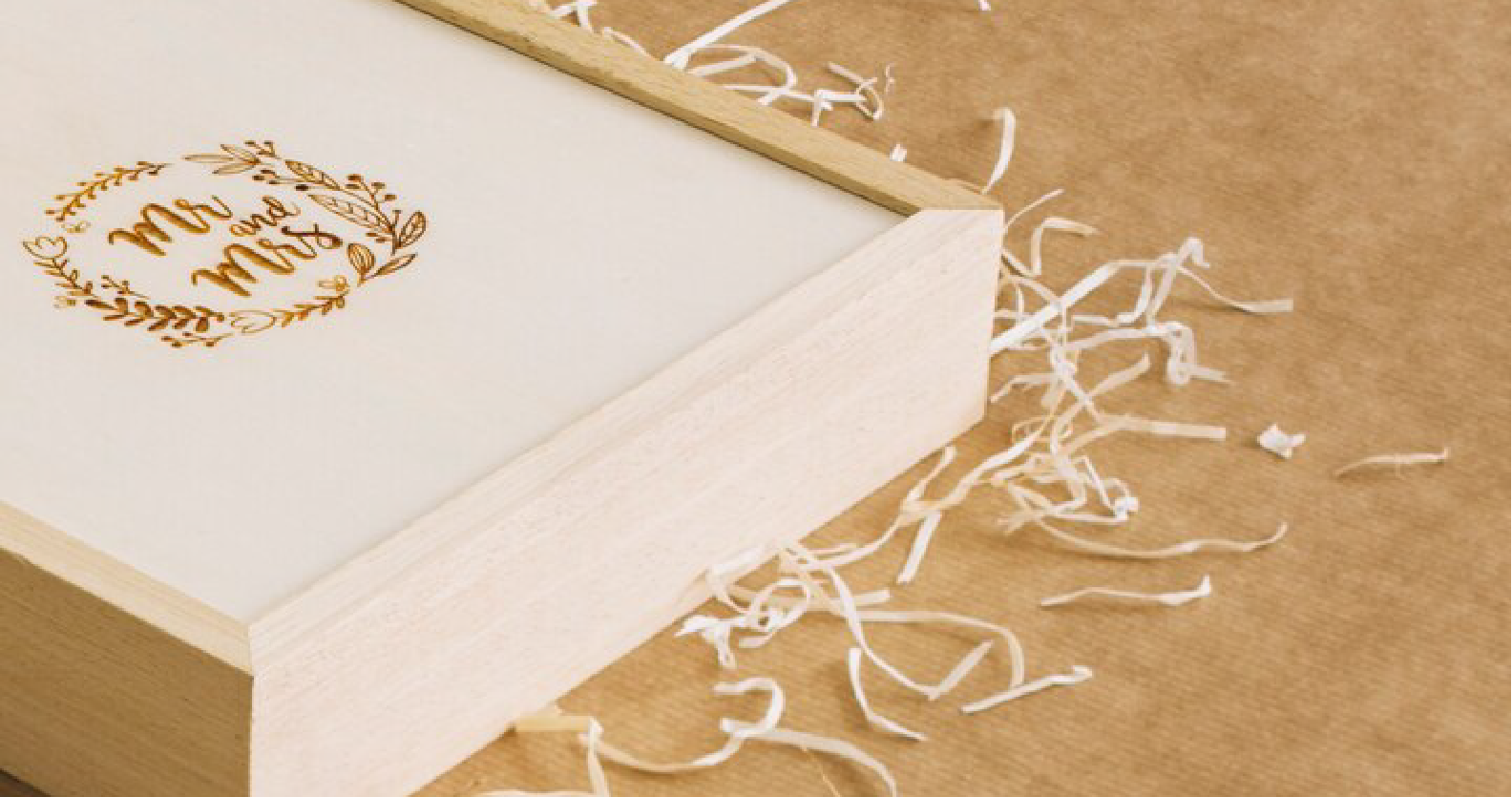
Packaging for Footwear
Frustration-Free Packaging vs. Standard Packaging: Key Differences
Article by : Lussopack

Packaging is important in e-commerce and retail, influencing everything from customer satisfaction and brand perception to environmental impact and logistics efficiency. It’s about shaping the customer experience from the moment the box arrives. With rising demand for eco-conscious practices and smoother unboxing moments, how you package your products matters more than ever.
Among the various packaging strategies today, Amazon’s Frustration-Free Packaging (FFP) has become a notable alternative to conventional methods. It’s designed not only to eliminate packaging waste but also to improve the end-user experience. Understanding the difference between standard packaging and frustration free packaging is essential for any business aiming to reduce returns, delight customers, and align with sustainability goals.
What is Frustration-Free Packaging?

Frustration-Free Packaging, often abbreviated as FFP, was first introduced by Amazon in 2008 to tackle a simple yet persistent problem: difficult packaging. We’ve all been there—wrestling with sharp plastic clamshells or cutting through excessive tape. FFP was Amazon’s answer to this issue.
Here’s what sets it apart:
- Ease of Opening: Frustration-free packaging is designed so that customers don’t need scissors, knives, or brute strength to get to the product. It opens with a few simple motions—making it accessible to everyone, including elderly customers or those with mobility issues.
- Recyclable Materials: The materials used are 100% recyclable, making this packaging method friendlier to the environment. There are no plastic wraps, no metal twist ties—just clean, streamlined packaging that can be tossed in a recycling bin.
- Minimal Packaging Waste: FFP intentionally avoids over-packaging. There are fewer layers, fewer inserts, and no excess filler. It’s lean, efficient, and designed to get the job done without clutter.
But the benefits don’t stop at convenience. Frustration-free packaging also helps reduce shipping volume, leading to lower transportation costs and carbon emissions. From both a customer and environmental perspective, it’s a win-win.
So when people ask, “What does frustration-free packaging mean?” or more specifically, “What does Amazon frustration free packaging mean?” —the answer is clear: it means a simpler, greener, and more thoughtful method to packaging that puts the end user first.
What is Standard Packaging?

On the flip side, standard packaging refers to the traditional method we’ve been used to for decades. It’s the norm in many industries, especially in retail environments where visual appeal on the shelf still matters. But it’s not without its drawbacks.
Here are some common characteristics of standard packaging:
- Excessive Packaging Materials: Products are often wrapped in several layers of plastic, cardboard, foam, or even metal ties. While the intent is usually to protect the product or deter theft, it can feel excessive to consumers.
- Difficult-to-Open Designs: Ever fought with a blister pack or sliced your hand on a stubborn clamshell? That’s standard packaging. It frequently requires tools and effort, which can be frustrating and even unsafe.
- Non-Recyclable Components: Many standard packaging materials are made from mixed components—like plastic combined with foil or adhesives—that are hard to separate and therefore difficult to recycle.
While standard packaging does have its strengths—like offering strong protection and supporting retail displays—it often sacrifices user-friendliness and environmental responsibility. This tradeoff becomes more noticeable as consumer expectations evolve.
So if you’ve ever wondered, “What is standard packaging?” It’s the traditional, sometimes clunky method that prioritizes function and appearance over simplicity and sustainability.
Key Differences Between Frustration-Free and Standard Packaging

When comparing frustration free packaging vs. standard packaging, it’s important to understand that the choice directly impacts customer satisfaction, environmental responsibility, and shipping efficiency. While both types aim to protect and deliver products safely, they differ significantly in design philosophy, materials used, and overall user experience. Let’s break down the key differences between Amazon standard packaging vs. frustration free with this table.
| Aspect | Frustration-Free Packaging | Standard Packaging |
|---|---|---|
| Customer Experience | Designed for easy opening without tools, increasing satisfaction. | Often cumbersome to open, potentially leading to frustration. |
| Packaging Waste & Sustainability | Uses minimal, recyclable materials, reducing environmental impact. | Tends to involve excessive, non-recyclable materials, increasing waste. |
| Shipping Efficiency | Streamlined design can lead to reduced shipping costs due to optimized package sizes. | Bulkier packaging may result in higher shipping costs and less efficient logistics. |
| Cost Implications | May involve higher initial design costs but can lead to savings in shipping and materials over time. | Generally lower upfront costs but potential for increased expenses related to materials and shipping inefficiencies. |
| Product Protection | Provides adequate protection while minimizing materials; however, suitability varies by product type. | Often offers robust protection but at the expense of increased material use and potential over-packaging. |
| Brand Perception | Aligns with eco-friendly initiatives, appealing to environmentally conscious consumers. | May be perceived as wasteful, potentially impacting brand image negatively among sustainability-minded customers. |
As seen in the comparison, the difference between standard packaging and frustration free packaging lies in how the packaging aligns with your brand’s values and customer expectations. If your priority is sustainability, ease of use, and efficient logistics, frustration-free packaging may be the right fit. On the other hand, if your product demands maximum protection or premium shelf presence, standard packaging might still be the more practical choice. Understanding what is the difference between frustration free packaging and standard empowers brands to make informed decisions that enhance customer experience and operational efficiency in a rapidly evolving marketplace.
Pros and Cons of Frustration-Free Packaging and Standard Packaging
When comparing frustration free packaging vs. standard packaging, it’s important to weigh the strengths and limitations of both. Each serves a purpose depending on the product, target audience, and brand goals.

Pros of Frustration-Free Packaging
- Delivers a better unboxing experience: One of the top advantages of frustration-free packaging is the ease and satisfaction it brings to customers. No tools. No mess. Just a smooth, straightforward experience.
- Eco-friendly by design: Since it uses recyclable materials and avoids excess waste, FFP aligns with growing consumer demand for sustainable practices. This makes it an excellent choice for eco-conscious brands.
- Improves logistics efficiency: Frustration-free packaging is often more compact. Smaller boxes mean more products per shipment and lower transportation costs—an added benefit for online retailers.
- Reduces damage returns: Since FFP is designed to protect items without over-packaging, it can reduce the rate of damaged goods and returns.
Cons of Frustration-Free Packaging
- Upfront redesign costs: Transitioning from standard to FFP may require rethinking your entire packaging system. That often involves new tooling, testing, and design work.
- Higher initial investment: Especially for custom packaging, you may pay more upfront compared to bulk standard options.
- Not ideal for all products: Fragile or high-value items might need extra layers of protection, making standard packaging more appropriate in some cases.
Still, for many brands, the benefits of frustration free packaging—especially in terms of customer satisfaction and sustainability—can outweigh the costs over time.

Pros of Standard Packaging
- Familiar and easy to produce: Many manufacturers are already set up to offer standard packaging, making it a convenient option for mass production.
- Economical in large volumes: Bulk orders of standard packaging materials are often cheaper, especially if aesthetics are not a major concern.
- Good for delicate items: With added layers of foam, padding, or plastic, standard packaging offers strong protection during transit.
Cons of Standard Packaging
- Can frustrate consumers: Difficult-to-open designs like clamshells and twist ties can hurt the user experience, especially for elderly or differently abled individuals.
- Greater environmental impact: Excessive and mixed-material packaging often ends up in landfills, hurting your brand’s sustainability image.
- Less efficient for shipping: Bulkier boxes and added filler materials mean higher shipping costs—especially over time.
When considering standard vs. frustration free packaging or trying to understand Amazon frustration free packaging vs. standard, the real question is: how does your packaging strategy reflect your brand values and customer expectations?.
Frustration-Free vs. Standard Packaging: When to Choose Each Type
Deciding between frustration free vs. standard packaging depends on your product type, customer expectations, and business goals. There’s no one-size-fits-all answer—each option serves a unique purpose in today’s retail and e-commerce landscape.

Frustration-Free Packaging Is Ideal For:
- Direct-to-consumer brands that rely on seamless unboxing experiences. If your product ships directly to customers, reducing opening hassle can elevate satisfaction and encourage repeat purchases.
- Eco-conscious businesses. If sustainability is a key part of your brand identity, frustration free packaging supports that message. Using recyclable, minimal packaging materials can also help you meet environmental goals and appeal to green-minded consumers.
- Streamlined logistics operations. FFP is generally designed with compactness in mind. This makes it a great choice for brands looking to reduce freight costs or optimize warehouse space.
- Products that are lightweight or durable. Items like books, electronics accessories, or apparel don’t need bulky protection, making FFP both practical and efficient.
Ultimately, when you prioritize user experience and planet-friendly practices, frustration free packaging offers a competitive edge.

Standard Packaging May Be Appropriate For:
- Luxury or high-end retail products. When visual presentation on shelves matters—like in cosmetics, jewelry, or perfumes—standard packaging provides more room for elaborate structures and design elements.
- Fragile or high-value items. Glassware, electronics, and other breakables often need extra layers, foam inserts, or molded plastic to ensure safe delivery. In such cases, standard packaging still holds a protective advantage.
- Brand storytelling through physical packaging. For premium products where packaging is part of the brand experience, like in boutique gift boxes or limited edition collections, what is standard packaging offers the space and structure to get creative.
If your packaging needs to serve both as a marketing tool and a protective barrier, standard packaging—when done well—can still be the right fit.

At LussoPack, we understand that packaging is an extension of your brand and a critical touchpoint in the customer journey. With over 30 years of experience in structural design, production, and innovation, Lussopack goes beyond off-the-shelf solutions. We work closely with clients across the globe to develop packaging that supports both brand storytelling and practical requirements—whether that means integrating eco-friendly materials, optimizing for logistics, or crafting a sophisticated unboxing moment.
As brands consider the difference between standard packaging and frustration free packaging, we offer the flexibility to incorporate the best of both worlds: the elegance and strength of traditional packaging with the simplicity and sustainability modern consumers demand. We’re also committed to helping our clients transition toward greener practices without sacrificing quality. Our team constantly explores new materials and engineering techniques that align with today’s environmental expectations—because we believe luxury should be responsible, too. Lussopack is here to deliver solutions that are as thoughtful as they are beautiful.
Interesting Blogs

Packaging Innovations

Global Packaging Logistics

Packaging for Clothing
